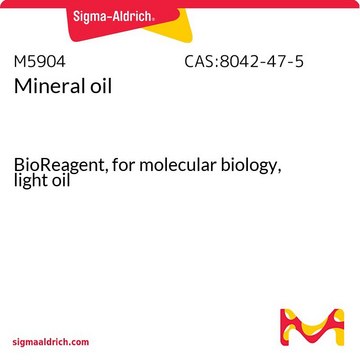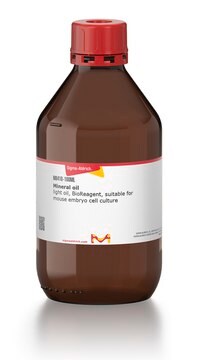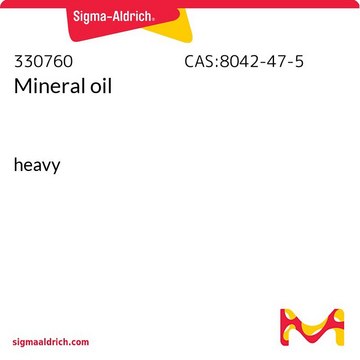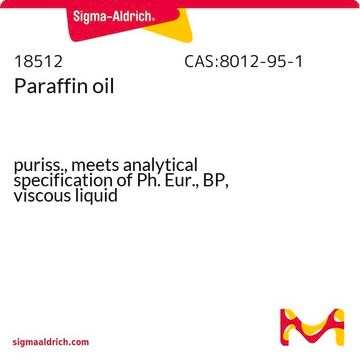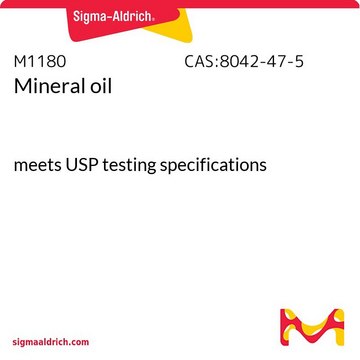Kluczowe dokumenty
M8662
Mineral oil
PCR Reagent
Synonim(y):
Mineral oil for PCR
About This Item
Polecane produkty
klasa czystości
PCR Reagent
Poziom jakości
Formularz
liquid
opakowanie
vial of 1.5 mL (Total volume 7.5 mL (5 vials))
metody
PCR: suitable
kolor
colorless
współczynnik refrakcji
n20/D 1.467 (lit.)
gęstość
0.84 g/mL at 25 °C (lit.)
obecność zanieczyszczeń
DNase, RNase, protease, none detected
temp. przechowywania
room temp
Klucz InChI
AEOVEGJBKQQFOP-DDVLFWKVSA-L
Szukasz podobnych produktów? Odwiedź Przewodnik dotyczący porównywania produktów
Opis ogólny
Zastosowanie
- for routine PCR amplifications
- to improve the heat conductivity between the device and the cycler during reverse transcription-polymerase chain reaction (RT–PCR) amplification
- to prevent evaporation during single-cell MATQ-sequencing performed on Bravo automated liquid handling platform
Cechy i korzyści
- Provided in a convenient 5 × 1.5 mL (1 vial) pack size
- Tested for the absence of DNase, RNase, and protease.
Kod klasy składowania
10 - Combustible liquids
Klasa zagrożenia wodnego (WGK)
WGK 1
Temperatura zapłonu (°F)
No data available
Temperatura zapłonu (°C)
No data available
Środki ochrony indywidualnej
Eyeshields, Gloves
Wybierz jedną z najnowszych wersji:
Masz już ten produkt?
Dokumenty związane z niedawno zakupionymi produktami zostały zamieszczone w Bibliotece dokumentów.
Klienci oglądali również te produkty
Protokoły
Method for bacterial genome analysis and detection of pathogens. Minimize false positive PCRs through lab design and reagents tested for use in bacterial PCR applications.
Protocol using antibody mediated hot start polymerase. Method has short activation period (<1min), and results in higher yields and more specificity over standard PCR methods.
Hot Start Taq Polymerase protocol to reduce non-specific amplification, with MgCl2 Optimization
Protocol using antibody mediated hot start polymerase with a red dye for easy gel loading. Method has short activation period (<1min), and results in higher yields and more specificity over standard PCR methods.
Nasz zespół naukowców ma doświadczenie we wszystkich obszarach badań, w tym w naukach przyrodniczych, materiałoznawstwie, syntezie chemicznej, chromatografii, analityce i wielu innych dziedzinach.
Skontaktuj się z zespołem ds. pomocy technicznej